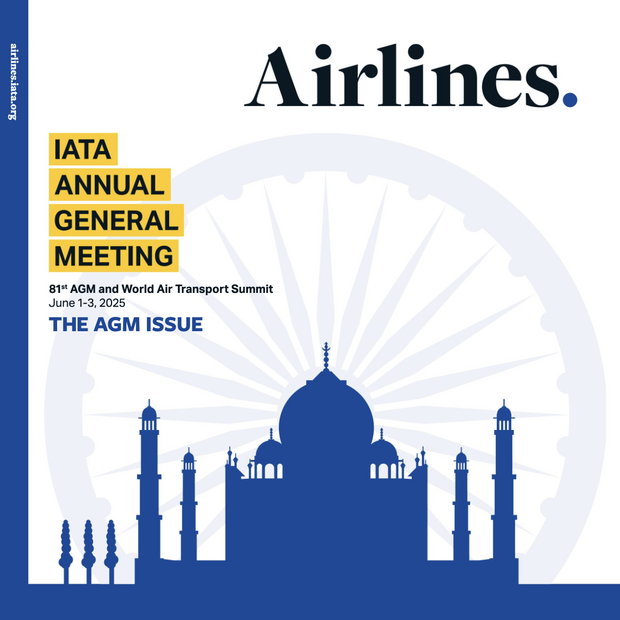
Translations:
استمرار التعافي البطيء في حركة السفر الجوي خلال يونيو (pdf)
Recuperação de viagens aéreas em junho ainda decepciona (pdf)
国际航协:6月份国际航空旅行持续令人失望 (pdf)
La reprise des voyages aériens déçoit encore en juin (pdf)
Geneva - The International Air Transport Association (IATA) announced passenger demand performance for June 2021 showing a very slight improvement in both international and domestic air travel markets. Demand remains significantly below pre-COVID-19 levels owing to international travel restrictions.
As comparisons between 2021 and 2020 monthly results are distorted by the extraordinary impact of COVID-19, unless otherwise noted, all comparisons are to June 2019, which followed a normal demand pattern.
- Total demand for air travel in June 2021 (measured in revenue passenger kilometers or RPKs) was down 60.1% compared to June 2019. That was a small improvement over the 62.9% decline recorded in May 2021 versus May 2019.
- International passenger demand in June was 80.9% below June 2019, an improvement from the 85.4% decline recorded in May 2021 versus two years ago. All regions with the exception of Asia-Pacific contributed to the slightly higher demand.
- Total domestic demand was down 22.4% versus pre-crisis levels (June 2019), a slight gain over the 23.7% decline recorded in May 2021 versus the 2019 period. The performance across key domestic markets was mixed with Russia reporting robust expansion while China returned to negative territory.
“We are seeing movement in the right direction, particularly in some key domestic markets. But the situation for international travel is nowhere near where we need to be. June should be the start of peak season, but airlines were carrying just 20% of 2019 levels. That’s not a recovery, it’s a continuing crisis caused by government inaction,” said Willie Walsh, IATA’s Director General.
International Passenger Markets
| JUNE 2021 (% vs JUNE 2019) |
world share1 | rpk | ask | PLF (%-PT)2 | PLF (LEVEL)3 |
|---|---|---|---|---|---|
| Total Market | 100.0% | -60.1% | -51.6% | -14.8% | 69.6% |
| Africa | 1.9% | -66.6% | -59.5% | -12.4% | 58.7% |
| Asia Pacific | 38.6% | -65.6% | -56.9% | -16.6% | 65.7% |
| Europe | 23.7% | -69.2% | -59.1% | -21.6% | 65.8% |
| Latin America | 5.7% | -50.2% | -47.1% | -4.8% | 78.4% |
| Middle East | 7.4% | -77.7% | -62.9% | -30.5% | 45.9% |
| North America | 22.7% | -36.2% | -29.6% | -8.3% | 80.6% |
1) % of industry RPKs in 2020 2) Change in load factor vs. the same month in 2019 3) Load Factor Level
Asia-Pacific airlines’ June international traffic fell 94.6% compared to June 2019, unchanged from the 94.5% decline in May 2021 versus May 2019. The region had the steepest traffic declines for an eleventh consecutive month. Capacity dropped 86.7% and the load factor was down 48.3 percentage points to 33.1%, the lowest among regions.
European carriers saw their June international traffic decline 77.4% versus June 2019, a gain from the 85.5% decrease in May compared to the same month in 2019. Capacity declined 67.3% and load factor fell 27.1 percentage points to 60.7%.
Middle Eastern airlines posted a 79.4% demand drop in June compared to June 2019, improving from the 81.3% decrease in May, versus the same month in 2019. Capacity declined 65.3% and load factor deteriorated 31.1 percentage points to 45.3%.
North American carriers’ June demand fell 69.6% compared to the 2019 period, improving from the 74.2% decline in May versus two years ago. Capacity sank 57.3%, and load factor dipped 25.3 percentage points to 62.6%.
Latin American airlines saw a 69.4% drop in June traffic compared to the same month in 2019, improved over the 75.3% decline in May compared to May 2019. June capacity fell 64.6% and load factor dropped 11.3 percentage points to 72.7%, which was the highest load factor among the regions for the ninth consecutive month.
African airlines’ traffic fell 68.2% in June versus the same month two years ago, an improvement from the 71.5% decline in May compared to May 2019. June capacity contracted 60.0% versus June 2019, and load factor declined 14.5 percentage points to 56.5%.
Domestic Passenger Markets
| JUNE 2021 (%vs JUNE 2019) |
world share1 | rpk | ask | PLF (%-PT)2 | PLF (LEVEL)3 |
|---|---|---|---|---|---|
| Domestic | 54.3% | -22.4% | -15.5% | -6.9% | 78.8% |
| Dom. Australia | 0.7% | -40.7% | -28.5% | -13.3% | 65.0% |
| Dom. Brazil | 1.6% | -31.1% | -30.4% | -0.9% | 80.9% |
| Dom. China P.R. | 19.9% | -10.8% | -0.8% | -8.6% | 76.2% |
| Dom India | 2.1% | -70.8% | -59.1% | -25.8% | 63.8% |
| Dom. Japan | 1.5% | -67.6% | -45.1% | -29.2% | 42.0% |
| Dom. Russian Fed. | 3.4% | 33.0% | 39.4% | -4.0% | 81.3% |
| Dom. US | 16.6% | -14.9% | -11.2% | -3.8% | 85.9% |
1) % of industry RPKs in 2020 2) Change in load factor vs. the same month in 2019 3) Load Factor Level
China’s domestic traffic returned to negative territory in June, declining 10.8% compared to June 2019, following a 6.3% growth in May versus the same period in 2019. New restrictions had been introduced following a COVID-19 outbreak in several Chinese cities.
US domestic traffic improved from a 25.4% decline in May versus the same month in 2019, to a 14.9% decline in June. Life in the US was starting to see some normalcy following the easing of measures and the rapid rollout of the COVID-19 vaccination.
The Bottom Line
“With each passing day the hope of seeing a significant revival in international traffic during the Northern Hemisphere summer grows fainter. Many governments are not following the data or the science to restore the basic freedom of movement. Despite growing numbers of vaccinated people and improved testing capacity we are very close to losing another peak summer season on the important trans-Atlantic market. And the UK’s flip-flop to reinstate quarantine for vaccinated arrivals from France is the kind of policy development that destroys consumer confidence when it is most needed,” said Walsh.
“A risk-managed re-connecting of the world is what we need. Vaccinated travelers should have their freedom of movement returned. An efficient testing regime can sufficiently manage risks for those unable to be vaccinated. This is the underlying message in the latest WHO travel guidance. The UK, Singapore and Canada have indicated timelines to open their borders without quarantine for vaccinated travelers. The European Commission has recommended that its member states adopt travel protocols that are closely aligned with the WHO—including testing for unvaccinated travelers. Similar moves to re-open borders in line with the WHO guidance by US—leaders in vaccinating their populations—would give critical impetus to demonstrating that we can live and travel while managing the risks of COVID-19,” said Walsh.
View the full June Air Passenger Market Analysis (including 2021 vs. 2020 comparisons)
Access One Ocean, Two Shores: Time to Reconnect (pdf) presentation by Ezgi Gulbas, IATA's Senior Economist
View remarks of Willie Walsh from 28 July 2021 media briefing
For more information, please contact:
Corporate Communications
Tel: +41 22 770 2967
Email: corpcomms@iata.org
Notes for Editors:
- IATA (International Air Transport Association) represents some 290 airlines comprising 82% of global air traffic.
- You can follow us at https://twitter.com/iata for announcements, policy positions, and other useful industry information.
- Statistics compiled by IATA Economics using direct airline reporting complemented by estimates, including the use of FlightRadar24 data provided under license.
- All figures are provisional and represent total reporting at time of publication plus estimates for missing data. Historic figures are subject to revision.
- Domestic RPKs accounted for about 54.3% of the total market.
- Explanation of measurement terms:
- RPK: Revenue Passenger Kilometers measures actual passenger traffic
- ASK: Available Seat Kilometers measures available passenger capacity
- PLF: Passenger Load Factor is % of ASKs used.
- IATA statistics cover international and domestic scheduled air traffic for IATA member and non-member airlines.
- In 2020, total passenger traffic market shares by region of carriers in terms of RPK were: Asia-Pacific 38.6%, Europe 23.7%, North America 22.7%, Middle East 7.4%, Latin America 5.7%, and Africa 1.9%.

